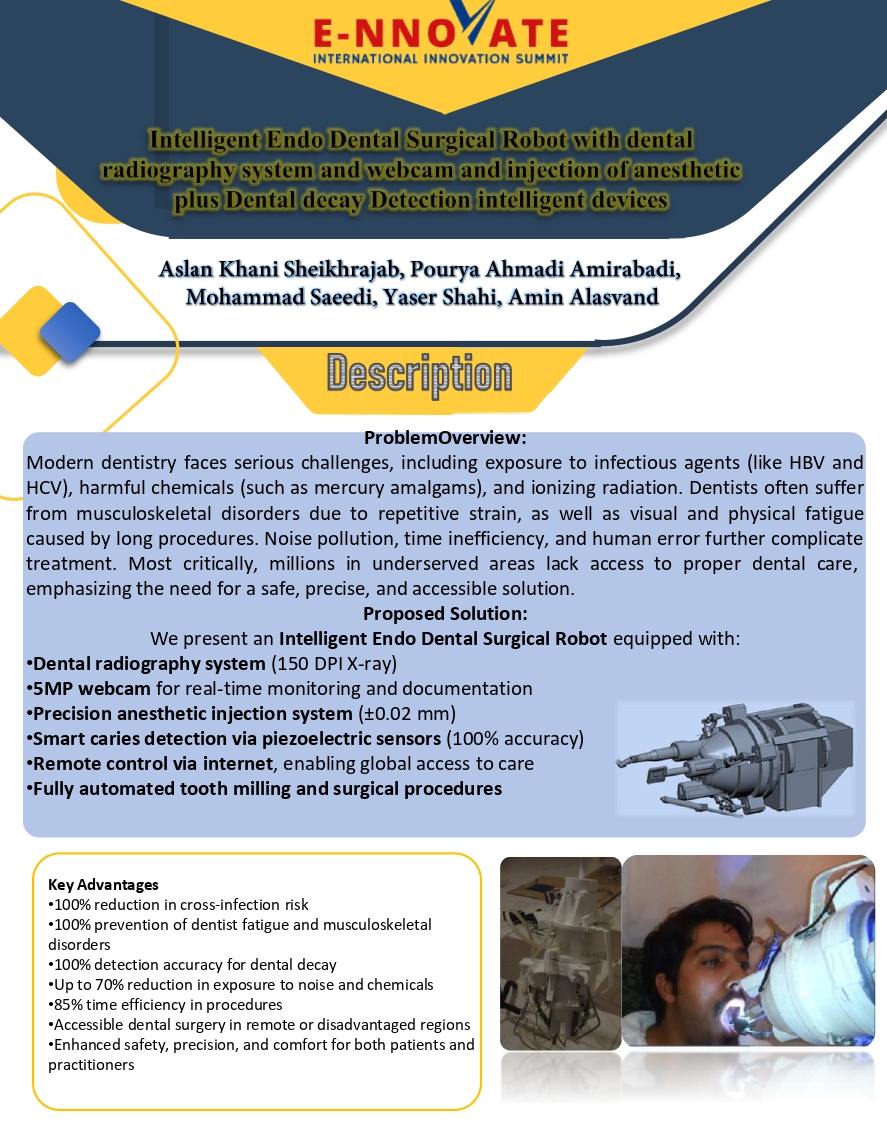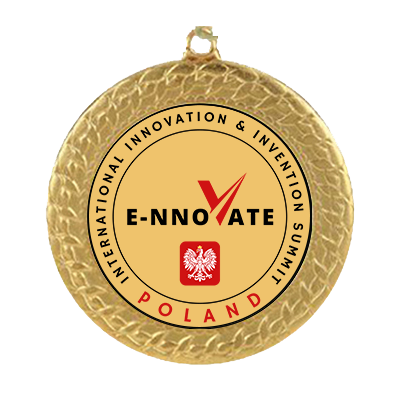
Intelligent Endo Dental Surgical Robot with dental radiography system and webcam and injection of anesthetic plus Dental decay Detection intelligent devices
Description: ProblemOverview: Modern dentistry faces serious challenges, including exposure to infectious agents (like HBV and HCV), harmful chemicals (such as mercury amalgams), and ionizing radiation. Dentists often suffer from musculoskeletal disorders due to repetitive strain, as well as visual and physical fatigue caused by long procedures. Noise pollution, time inefficiency, and human error further complicate treatment. Most critically, millions in underserved areas lack access to proper dental care, emphasizing the need for a safe, precise, and accessible solution. Proposed Solution: We present an Intelligent Endo Dental Surgical Robot equipped with: • Dental radiography system (150 DPI X-ray) • 5MP webcam for real-time monitoring and documentation • Precision anesthetic injection system (±0.02 mm) • Smart caries detection via piezoelectric sensors (100% accuracy) • Remote control via internet, enabling global access to care • Fully automated tooth milling and surgical procedures
Intelligent Endo Dental Surgical Robot with dental radiography system and webcam and injection of anesthetic plus Dental decay Detection intelligent devices Dental procedures, while essential, come with significant occupational and clinical challenges. Dentists are frequently exposed to infectious agents such as hepatitis B and C viruses, bacterial and fungal pathogens, as well as to hazardous chemical substances including mercury amalgams, resins, and sealers. Continuous exposure to ionizing and non-ionizing radiation during radiographic imaging increases health risks over time. In addition to environmental dangers, the physical demands of dental practice often result in musculoskeletal disorders like chronic back, neck, and shoulder pain, wrist injuries, and tension headaches. Visual fatigue, auditory discomfort from prolonged exposure to high-frequency dental instruments, and premature physical exhaustion further reduce the efficiency and well-being of practitioners. Moreover, a significant portion of the global population—especially those in deprived and rural areas—lack access to basic dental services due to shortages in professional manpower and infrastructure, leaving oral health severely neglected. Time mismanagement during procedures and the risk of human error compound these challenges, highlighting the urgent need for intelligent, automated solutions in modern dentistry. Key Advantages • 100% reduction in cross-infection risk • 100% prevention of dentist fatigue and musculoskeletal disorders • 100% detection accuracy for dental decay • Up to 70% reduction in exposure to noise and chemicals • 85% time efficiency in procedures • Accessible dental surgery in remote or disadvantaged regions • Enhanced safety, precision, and comfort for both patients and practitioners
Organisation: University of Twente (UT)
Innovator(s): Aslan Khani Sheikhrajab, Pourya Ahmadi Amirabadi, Mohammad Saeedi, Yaser Shahi, Amin Alasvand
Category: Healthcare/Fitness
Country: Netherlands

